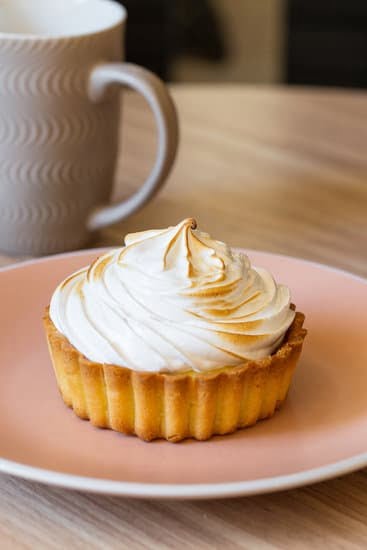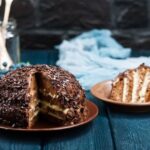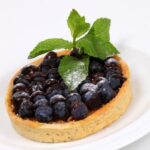Edible sand for cake decorating is a versatile and unique ingredient that adds a touch of creativity and texture to cake designs. In this introduction, we will explore what edible sand is and how it can be used to enhance cake decoration.
Edible sand refers to a mixture of ingredients that are ground together to form fine granules resembling real sand. It can be made from various edible materials such as cookies, graham crackers, or even cereal. This edible sand can then be used to create stunning effects and add visual interest to cakes.
When it comes to cake decorating, using edible sand opens up a world of possibilities. It can be used in various ways, such as replicating sandy beaches, desert landscapes, or adding texture to themed cakes. Whether you’re looking for a rustic, natural look or a vibrant and colorful design, edible sand offers endless options for creating unique and eye-catching cakes.
In the following sections, we will delve deeper into the world of edible sand for cake decorating. We will discuss how to make it at home with simple ingredients, explore popular techniques for incorporating it into cake designs, showcase different types of edible sands available in the market, provide tips and tricks for working with this ingredient effectively, and even discover its versatility beyond cake decoration.
So let’s get started and discover the art of using edible sand for transforming your cakes into stunning masterpieces.
How to Make Edible Sand at Home
Edible sand is a fantastic and versatile ingredient that can add a unique touch to cake decorating. Making your own edible sand at home allows you to customize the texture, color, and flavor according to your specific needs and preferences.
It is also a cost-effective alternative to purchasing pre-made edible sands from stores. In this section, we will explore the ingredients needed for making edible sand and provide step-by-step instructions on how to create different textured edible sands.
To make edible sand at home, you will need a few basic ingredients that are easily available. The main ingredient is typically cookies or biscuits of your choice. Graham crackers, digestive biscuits, or vanilla wafers work well for creating a sandy texture. Other ingredients that can be added include sugar, cocoa powder, powdered food coloring, or flavored extracts for extra taste.
Here is a simple step-by-step guide on how to make different textured edible sands:
- Choose the base cookies or biscuits according to the desired texture (e.g., graham crackers for coarser sand or vanilla wafers for finer sand).
- Place the cookies or biscuits into a food processor or blender and pulse until they resemble fine crumbs.
- If desired, add in any additional ingredients such as sugar, cocoa powder, or powdered food coloring while pulsing.
- Continue pulsing until all ingredients are well combined and you have achieved the desired consistency.
- Transfer the edible sand to an airtight container for storage until ready to use.
It’s important to note that achieving the perfect consistency and color of your edible sand may require some experimentation. Start with small amounts of additional ingredients and gradually increase until you achieve your desired result.
| Texture | Main Ingredient | Additions (optional) |
|---|---|---|
| Coarse | Graham crackers | Sugar, cinnamon |
| Medium | Digestive biscuits | Cocoa powder, powdered food coloring |
| Fine | Vanilla wafers | Powdered sugar, flavored extracts |
By making your own edible sand at home, you can have full control over the ingredients and customize it to suit your specific cake decorating needs. It also allows for greater creativity and experimentation in achieving different textures and flavors. Whether you’re creating a beach-themed cake or adding an extra touch to other desserts, homemade edible sand is a delightful addition that will impress both visually and taste-wise.
Popular Edible Sand Techniques for Cake Decorating
Layered Sand Effect
One popular technique for using edible sand in cake decorating is creating a layered sand effect. This technique involves adding different colors and textures of edible sand to create depth and dimension on the cake’s surface. To achieve this effect, start by applying a thin layer of buttercream or frosting to the cake as a base.
Then, sprinkle one color of edible sand onto the frosting and gently press it in. Repeat this process with different colors of edible sand, layering them on top of each other to create the desired effect. The result is a beautiful, textured design that resembles layers of sand.
Ombre Sand Effect
Another eye-catching technique using edible sand is the ombre effect. This technique involves blending different shades of edible sand together to create a gradient look on the cake’s surface. To achieve this effect, start by mixing small amounts of two or more colors of edible sand in separate bowls.
Gradually blend the colors together until you reach your desired ombre gradient. Sprinkle the blended edible sand onto the cake’s surface, starting with one color at the top and gradually transitioning to another color as you move downwards. Use a cake comb or offset spatula to smooth out any harsh lines and create a seamless transition between colors.
Marbling Techniques with Edible Sand
Marbling techniques are commonly used in cake decorating, and they can be enhanced by incorporating edible sand into the mix. To achieve a marbled look with edible sand, start by spreading a thin layer of buttercream or frosting on your cake as a base. Next, take two or more contrasting colors of edible sand and lightly sprinkle them onto the frosting in random patterns.
Use an offset spatula or butter knife to gently swirl and blend the colors together, creating a marbled effect reminiscent of swirling patterns found in natural stones or marble surfaces. The end result is a visually stunning, textured cake that is sure to impress.
These popular edible sand techniques offer endless possibilities for creating unique and visually appealing cake designs. Whether you choose to go for a layered sand effect, an ombre gradient, or a marbled look, edible sand can be used in various ways to add texture, depth, and visual interest to your cakes.
Don’t be afraid to experiment with different colors and textures of edible sand to truly unleash your creativity and create cakes that are as delicious as they are beautiful.
Types of Edible Sand for Cake Decorating
When it comes to cake decorating, the options are endless. One unique and versatile ingredient that can elevate your cake designs is edible sand. But what exactly is edible sand, and what types are available in the market?
Edible sand is a fantastic tool for adding texture and visual interest to your cakes. It can mimic the appearance and feel of real sand and be used in various cake decorating techniques. From realistic beach-themed cakes to whimsical desert landscapes, edible sand can help bring your vision to life.
There are different varieties of edible sand available, both commercially and homemade. Here are some popular types that you can consider for your next cake project:
- Cookie Crumb Sand: Made by crushing cookies into fine crumbs, such as graham crackers or digestive biscuits. This type of edible sand adds a tasty twist to your cake decorations.
- Sugar Sand: Created by grinding regular white sugar into a fine powder or using colored sugars for vibrant effects. Sugar sand gives your cakes a textured look and adds a touch of sweetness.
- Oreo Sand: A favorite among chocolate lovers, Oreo cookies crushed into fine crumbs create a rich and decadent edible sand option.
- Coconut Sand: Made by processing dried shredded coconut into small pieces or finely grating it to resemble sand grains. Coconut sand provides a tropical touch to your cakes.
- Almond Powder Sand: Ground almonds or almond flour can be used to create a grainy texture that resembles sandy beaches.
Each type of edible sand has its own unique characteristics that lend themselves well to different cake decorating themes and styles. It’s important to consider the desired texture, taste, and color when selecting the right type of edible sand for your project.
Whether you choose to purchase commercially made edible sands or make them at home using everyday ingredients, experimenting with different types can add an extra layer of creativity and customization to your cake designs. So don’t be afraid to explore all the options and discover new techniques using edible sand. Happy decorating.
Edible Sand for Themed Cakes
Incorporating edible sand into specific cake themes (e.g., beach, tropical, desert, etc.) adds a delightful touch of realism and creativity to the overall design. Themed cakes are an opportunity to transport your guests to a specific setting or evoke a particular mood. Edible sand is an excellent way to enhance these themes by mimicking different types of sand found in various environments.
Creative ideas and inspiration for themed cakes using edible sand
When it comes to themed cakes, the possibilities are endless with edible sand. For a beach-themed cake, you can create a realistic sandy shore by layering different shades of edible sand. Start with a light shade on the bottom and gradually transition to darker hues on top to replicate the natural gradient seen at a beach. To complete the look, consider adding seashells, beach toys, or fondant palm trees.
For a tropical-themed cake, use edible sand in vibrant colors like orange or pink to represent the beautiful sands found in tropical destinations. You can sprinkle these colorful sands around fondant flowers or on tiers inspired by tropical landscapes.
If you’re looking for something more adventurous, consider designing a desert-themed cake using edible sand. Use golden-colored sand for the base and create small dunes using textured molds or piping techniques. Add camel figurines or cacti made from fondant for an extra touch of desert authenticity.
Highlighting stunning examples of themed cakes decorated with edible sand
To spark your imagination and inspire your own creations with edible sand, here are some stunning examples of themed cakes that incorporate this versatile ingredient:
- Beach Wedding Cake: This elegant three-tiered cake features layers covered in white icing and adorned with delicately textured edible sand. Seashells crafted from fondant are strategically placed around each layer, creating an enchanting seaside scene perfect for a beach wedding celebration.
- Tropical Paradise Cake: Bursting with vibrant colors, this cake captures the essence of a tropical paradise. Edible sand in shades of coral and turquoise spreads across each layer, while fondant hibiscus flowers, palm leaves, and tropical birds complete the whimsical look.
- Moroccan Desert Cake: Inspired by the captivating landscapes of the Sahara desert, this cake showcases layers covered in golden edible sand. Textured fondant cacti and hand-painted camels add an authentic touch to this visually stunning dessert centerpiece.
Themed cakes provide the opportunity to bring joy and excitement to any celebration or event. By incorporating edible sand into your designs, you can elevate the overall aesthetic and create a truly memorable experience for both your eyes and taste buds.
Edible Sand as a Tasty Topping
Edible sand is not only a versatile ingredient for cake decorating, but it can also be used to enhance the visual appeal and flavor of other desserts. One creative way to use edible sand is by adding it as a tasty topping to ice cream, cupcakes, cookies, and more. The texture and unique flavors of the sand can add an interesting twist to traditional desserts.
To incorporate edible sand as a topping, simply sprinkle or layer it on your desired dessert. Whether you want to create a sandy beach effect on top of a cupcake or add texture and crunch to your ice cream sundae, edible sand can be the perfect addition.
Not only does edible sand provide an aesthetic element to your desserts, but it also adds a delicious crunch and mouthfeel. Depending on the type of edible sand you choose, you can experiment with various flavors such as chocolate, caramel, or even fruity options. Mixing different types of edible sands can also result in unique flavor combinations that will impress your guests.
Here are some ideas for using edible sand as a tasty topping:
- Sprinkle chocolate-flavored edible sand over vanilla ice cream or add caramel-flavored sand on top of a rich chocolate cake.
- Create cookie sandwiches by rolling the edges of homemade cookies in colorful edible sand before filling them with buttercream or jam.
- Decorate sugar cookies with patterns made from different shades of colored edible sands for an eye-catching look.
Incorporating edible sand as a tasty topping not only elevates the appearance and flavor profile of your desserts but also adds an unexpected element of texture that will surprise and delight anyone who takes a bite.
| Edible Sand Dessert Ideas | Description |
|---|---|
| Cupcake Beach Scene | Decorate cupcakes with a layer of blue frosting to represent the ocean, then sprinkle edible sand on top to create a sandy beach effect |
| Ice Cream Sundae | Sprinkle your favorite flavor of edible sand over a scoop of ice cream and top it off with whipped cream, chocolate sauce, and a cherry for a delightful treat |
| Edible Sand Donuts | Dip freshly baked donuts in melted chocolate or caramel and then roll them in edible sand for a unique and delicious twist on a classic dessert |
Tips and Tricks for Working with Edible Sand
Working with edible sand can be a fun and creative way to enhance your cake decorating skills. However, it is important to have some tips and tricks up your sleeve to ensure that you achieve professional-looking finishes with this unique ingredient. Here are some helpful suggestions for working with edible sand:
- Choose the Right Texture: The texture of your edible sand is crucial in achieving the desired effect on your cake. Depending on the design you are trying to create, you may need a finer or coarser texture. If you want a smooth and refined finish, use finely ground ingredients such as crushed cookies or graham crackers. For a more rustic and textured look, opt for larger grains like crushed nuts or dried fruits.
- Achieve Consistency and Color: Consistency is key when working with edible sand. To create the perfect consistency, start by adding small amounts of liquid (such as oil or melted butter) to your dry ingredients and mix well. Gradually add more liquid until you reach the desired texture. Similarly, if you want to achieve a specific color for your sand, consider adding food coloring or cocoa powder to the mixture until you achieve the desired shade.
- Dusting Techniques: When applying edible sand onto your cake, it is important to use the right dusting techniques for a seamless finish. One effective method is to use a fine-mesh sieve or shaker bottle to evenly distribute the sand over the surface of the cake.
Gently tap or shake the sieve or bottle while moving it in circular motions for uniform coverage. Alternatively, you can also use a clean and dry paintbrush to carefully brush the sand onto specific areas of the cake for more precise detailing. - Sealing Edible Sand: To ensure that your edible sand stays in place and doesn’t rub off on other surfaces, consider sealing it with a thin layer of piping gel or clear alcohol-based extract such as vodka. This will help preserve the texture and color of the sand while providing a protective barrier.
Remember, practice makes perfect when it comes to working with edible sand. Don’t be afraid to experiment with different techniques and textures to achieve the desired effect on your cakes. By following these tips and tricks, you can create stunning and unique designs that will impress your friends and family.
Edible Sand Safety and Storage
When using edible sand for cake decorating, it is important to ensure the safety of the ingredients. One must always consider any dietary restrictions or allergies that guests may have. When making homemade edible sand, it is crucial to use food-grade ingredients that are safe for consumption. This means using ingredients such as sugar, cookies or biscuits, nuts, and other edible items that are commonly used to create textured sands.
Proper storage techniques are also essential to maintain the freshness and longevity of edible sand. It is recommended that edible sand be stored in an airtight container in a cool, dry place away from direct sunlight. This will help prevent moisture absorption and preserve the texture of the sand. It is also advised to consume edible sand within a certain timeframe for optimal quality.
The shelf life of edible sand may vary depending on the ingredients used. Sugar-based sands tend to have a longer shelf life compared to those made with perishable items like cookies or nuts. Generally, it is best to consume homemade edible sand within two weeks of preparation. However, if commercially packaged edible sands are being used, it is essential to refer to the expiration date provided by the manufacturer.
By ensuring the safety of ingredients and following proper storage guidelines, you can enjoy using edible sand for cake decorating without any concerns about its freshness or potential health risks. So let your creativity flow and experiment with different types of edible sands to create stunning and delicious designs on your cakes.
Conclusion
In conclusion, edible sand is a versatile and innovative ingredient that can take your cake decorating skills to new heights. With its ability to add texture, depth, and visual interest to any design, edible sand has become a popular choice among bakers and decorators alike. Whether you are looking to create a beach-themed cake or simply enhance the overall aesthetic of your dessert, edible sand is the perfect ingredient for creative cake decorating.
Throughout this article, we have explored the various uses and benefits of edible sand in cake decorating. We have discussed how to make edible sand at home using simple ingredients and easy-to-follow instructions. Additionally, we have highlighted popular techniques such as layered effects, ombre styles, and marbling techniques that can be achieved with edible sand.
Furthermore, we have delved into the different types of edible sands available in the market and their unique characteristics. From natural sand substitutes to flavor-infused varieties, there is a wide range of options to suit every baker’s preference. We have also provided tips and tricks for working with edible sand, including how to overcome common challenges and achieve professional-looking finishes.
Frequently Asked Questions
What can I use for edible sand on a cake?
One option for creating edible sand on a cake is to use crushed cookies or biscuits. You can use cookies with a sandy texture, such as graham crackers or shortbread, and crush them into fine crumbs.
These crumbs can then be sprinkled or spread onto the cake to resemble sand. Another option is to use finely ground nuts, such as almonds or hazelnuts, which will give a similar sandy appearance.
How do you make edible sand for cakes?
Making edible sand for cakes is relatively simple and involves just a few steps. Firstly, select your desired ingredient that will mimic the sand texture, such as cookies or nuts. Then, place the chosen ingredient into a food processor or blender and process until you achieve fine crumbs that resemble sand grains.
If necessary, you can add some powdered sugar to the mixture to adjust the texture or color of the sand. Once you’ve obtained the desired consistency, simply sprinkle or apply the edible sand onto your cake using your preferred method.
What can I use to look like sand on a cake?
There are various alternatives that can be used to resemble sand on a cake if you prefer not to use actual edible materials. One option is to utilize brown sugar by sprinkling it over the cake’s frosting or icing. The color and granulated texture of brown sugar can effectively imitate sand in appearance.
Alternatively, crushed cereal like Rice Krispies or shredded coconut can also be used as substitutes for sand on a cake. Both ingredients provide a similar look when applied to the surface of the frosting and offer some additional taste and texture elements as well.

Welcome to our cake decorating blog! My name is Destiny Flores, and I am the proud owner of a cake decorating business named Cake Karma. Our mission is to provide delicious, beautiful cakes for all occasions. We specialize in creating custom cakes that are tailored specifically to each customer’s individual needs and tastes.





